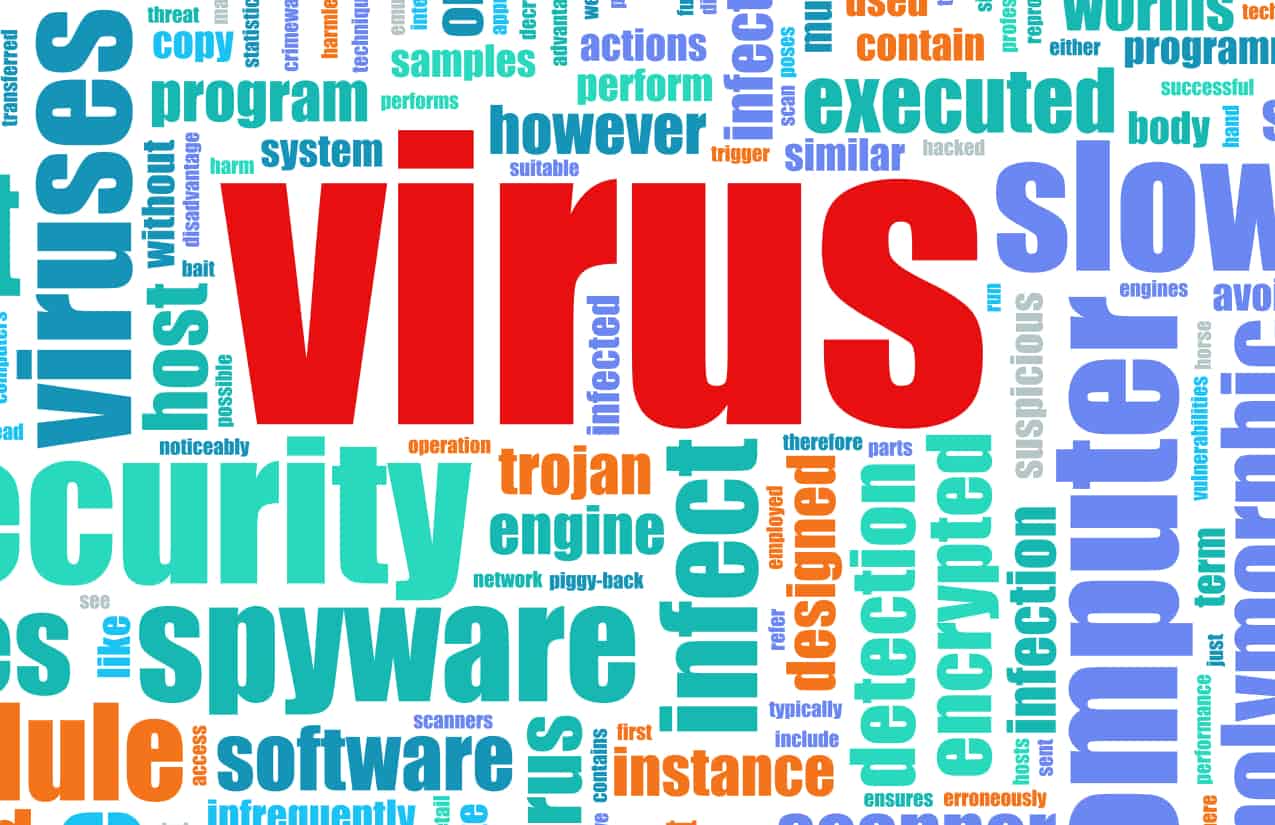
You may have heard about polymorphic malware before! Malware remains one of the most persistent and damaging types of attacks that we can face every day. Cybercriminals continuously develop sophisticated techniques to evade detection and stay ahead of security measures. Among these techniques, polymorphism has emerged as a powerful strategy that allows the malware to mutate and disguise itself, making it challenging for traditional security defences to identify and eliminate them. In the following lines, let’s explore the concepts of polymorphic malware, how they evade detection, and the implications for system security.
What is Polymorphic Malware?
Polymorphic malware is a malicious software type that can change its code structure or encryption pattern without altering its core functionality. By altering its appearance with each iteration, polymorphic malware evades signature-based detection systems, which rely on identifying specific patterns within the code. This shape-shifting nature enables the malware to bypass traditional antivirus solutions that rely heavily on signature-based detection.
To achieve polymorphism, malware authors employ various techniques, including encryption. This common approach is where the malicious code is encrypted using complex algorithms and requires a decryption routine to execute the payload. The decryption routine itself may also change with each iteration, ensuring a different encryption pattern for each infection.
Another technique used by polymorphic malware is code obfuscation. This technique involves the insertion of random or meaningless instructions, rearranging the order of code segments or utilising anti-analysis tricks to confuse security solutions. Such obfuscation makes it challenging for security tools to discern the malware’s true intent, making detection more difficult.
Polymorphic Virus vs Polymorphic Malware
Before we proceed to the challenges in detecting polymorphic malware, let’s compare polymorphic malware and polymorphic virus.
Polymorphic Virus
A polymorphic virus is a type of malware that is able to change its code or encryption patterns while maintaining its core functionality. It is specifically designed to evade detection by traditional antivirus software that relies on signature-based detection methods. The virus achieves polymorphism by using encryption and obfuscation techniques to create multiple versions of itself with each infection.
When a polymorphic virus infects a file or system, it encrypts its code or modifies its structure, making it appear different each time it replicates. Doing so generates a unique variant that is difficult to detect using static signatures. This dynamic behaviour allows the virus to bypass signature-based antivirus software, as its code changes with every iteration.
Polymorphic viruses often use various methods to alter their appearance, including changing encryption keys, employing different obfuscation techniques, or rearranging their code segments. These techniques make it challenging for security solutions to identify and block the virus based on known signatures or patterns.
Polymorphic Malware
On the other hand, polymorphic malware is a broader term that encompasses various types of malicious software beyond viruses. It refers to any malware that possesses the ability to change its code or characteristics to evade detection. This includes viruses and other forms of malware, such as worms, trojans, ransomware, or spyware.
Similar to polymorphic viruses, polymorphic malware alters its code or encryption patterns to generate unique variants that are difficult to detect using traditional security measures. By constantly mutating, it aims to evade signature-based detection, heuristic analysis, and other security mechanisms that rely on identifying specific patterns or characteristics within the malware’s code.
The term “polymorphic malware” is often used in a broader context to describe a range of malicious software that exhibits polymorphic behaviour. This behaviour allows the malware to change its form, characteristics, or behaviour with each infection or iteration, making it more challenging to identify, block, or remove from infected systems.

In summary, while a polymorphic virus is a specific type of malware that changes its code or encryption patterns, polymorphic malware is any type that exhibits polymorphic behaviour by dynamically altering its characteristics or code to evade detection.
Challenges In Polymorphic Malware Detection
Detecting polymorphic malware presents several challenges due to its ability to change its code, structure, or behaviour dynamically. Here are some key challenges in polymorphic malware detection:
- Code Variability: Polymorphic malware generates unique variants with each iteration, making it difficult to create static signatures or patterns for detection. Due to its ever-changing nature, traditional signature-based detection methods that rely on identifying specific code sequences or patterns may fail to detect the malware.
- Encryption and Obfuscation: Polymorphic malware often employs encryption and obfuscation techniques to hide its true intent and evade detection. By encrypting its code or obfuscating its structure, the malware can effectively camouflage itself and bypass traditional detection mechanisms.
- Constant Mutation: Polymorphic malware continuously mutates its code or behaviour, making it challenging to detect by static analysis techniques. It may employ techniques such as code randomisation, function reordering, or instruction substitution to alter its appearance with each iteration, rendering static analysis less effective.
- Zero-Day Exploits: Polymorphic malware can exploit zero-day vulnerabilities, which are previously unknown and have no existing patch or fix. Since these vulnerabilities are unknown to security vendors, detecting polymorphic malware that leverages them becomes challenging.
- Limited Visibility: Polymorphic malware may remain dormant or exhibit minimal activity until triggered, making it difficult to detect by traditional monitoring techniques. It may evade detection until it starts executing its malicious payload, potentially causing significant damage before being identified.
- Time and Resource Intensive Analysis: Analysing polymorphic malware can be time-consuming and resource-intensive. Advanced analysis techniques, such as dynamic analysis or sandboxing, may be required to uncover the malware’s true behaviour. These methods require significant computational resources and expertise to detect and analyse that type of malware accurately.
- Evolving Techniques: Malware authors constantly adapt their techniques to stay ahead of detection methods. As security solutions evolve to detect polymorphic malware, they may develop more sophisticated obfuscation techniques or employ advanced anti-analysis mechanisms, making detection even more challenging.
- False Positives and Negatives: Polymorphic malware detection systems may suffer from false positives (identifying benign files as malware) or false negatives (failing to detect actual malware). The dynamic nature of polymorphic malware increases the likelihood of false negatives as malware variants evolve rapidly and bypass detection mechanisms.
To overcome these challenges, security professionals and researchers continuously develop advanced detection techniques, such as behaviour-based analysis, machine learning, and anomaly detection. Organisations can enhance their capabilities of detecting and mitigating the risks associated with polymorphic malware by combining multiple detection methods and staying updated with the latest threat intelligence.
Mechanism Used by Polymorphic Malware to Invade the User Machine

Polymorphic malware employs various mechanisms to invade user machines and propagate their malicious payload. Here are some used common mechanisms:
- Email Attachments: Polymorphic malware often spreads through email attachments. Malicious code or scripts are embedded within seemingly harmless file attachments, such as Word documents, PDFs, or compressed archives. When users open or download these attachments, the malware is executed, infecting the user’s machine.
- Drive-by Downloads: It can exploit vulnerabilities in web browsers, plugins, or operating systems to initiate drive-by downloads. Users unknowingly visit compromised or malicious websites, which automatically initiate downloads or execute malicious code, infecting the user’s machine without their interaction.
- Infected Websites: Polymorphic malware can be distributed through compromised or malicious websites. When users visit these websites, they may be unaware that they trigger the download and execution of the malware. This can happen through malicious advertisements, hidden scripts, or injected code on web pages.
- Malicious Downloads: Polymorphic malware can be disguised as legitimate files or software available for download from the internet. Users may intentionally download and execute these files, believing them harmless or useful. However, the downloaded files contain hidden malware that infects the user’s machine.
- Network Exploits: It can also exploit vulnerabilities in network services, protocols, or shared resources to propagate across a network. For example, it may exploit weaknesses in file-sharing protocols, remote desktop services, or outdated software to gain unauthorised access to other machines on the network.
- Removable Media: Polymorphic malware can spread through infected removable media, such as USB drives or external hard disks. When users connect an infected device to their machine, the malware may automatically execute and infect the system.
- Social Engineering: Polymorphic malware often leverages social engineering techniques to trick users into executing or downloading the malware. This can include enticing users with fake software updates, free downloads, misleading advertisements, or enticing messages that encourage them to click on malicious links or open infected files.
- File-Sharing Networks: The malware may also be distributed through peer-to-peer (P2P) file-sharing networks. Users who download files from these networks may unknowingly acquire infected files with polymorphic malware.
It is important for users to exercise caution when interacting with email attachments, websites, downloads, or any form of digital content. Implementing robust security measures, such as up-to-date antivirus software, regular patching of software and operating systems, and user education on safe browsing and downloading practices, can help mitigate the risk of polymorphic malware invasions.
How to Detect a Polymorphic Malware
Detecting polymorphic malware can be challenging due to its ability to change its code, structure, or behaviour dynamically. However, here are some general approaches and techniques that can aid in the detection of polymorphic malware:
- Behaviour-Based Analysis: Polymorphic malware often exhibits certain malicious behaviours that can be detected through behaviour-based analysis. So, implement security solutions or antivirus software that monitor system behaviour, network traffic, and file activity for suspicious or abnormal actions. Then, look for signs such as unauthorised access attempts, unusual process behaviour, or unexpected network communications.
- Heuristic Analysis: Employ heuristic analysis techniques that can identify potential malware based on behaviour patterns, code obfuscation, or other suspicious characteristics. Heuristic analysis can detect such malware by analysing its behaviour, examining code structures, or identifying anomalies that deviate from normal software behaviour.
- Machine Learning: Leverage machine learning algorithms to detect polymorphic malware. Train machine learning models with large datasets containing known malware samples and associated characteristics. These models can learn to recognise common patterns, behaviours, or features associated with the malware, enabling them to detect and classify unknown variants.
- Signature Matching: While polymorphic malware can change its code, some variations may still retain certain identifiable signatures. Signature-based detection methods can effectively identify polymorphic malware variants that exhibit consistent characteristics or use similar code segments. So, regularly update antivirus software with the latest signature databases to enhance detection capabilities.
- Memory Analysis: Polymorphic malware may reside in system memory rather than on disk, making it harder to detect using traditional file-based scanning. Memory analysis tools can scan system memory for suspicious code, unauthorised hooks, or modifications to process memory. This technique can help identify polymorphic malware that actively resides in memory.
- Sandboxing and Virtualised Environments: Execute suspicious files or programs within controlled sandboxes or virtualised environments. These isolated environments allow for the observation of malware behaviour without jeopardising the host system. That malware may reveal its malicious activities in these environments, aiding in detection.
- Network Traffic Analysis: Monitor network traffic for unusual or suspicious patterns. Analyse network packets, inspect DNS requests, and examine traffic flow to identify potential indicators of polymorphic malware. Also, look for anomalous communication patterns, connections to known malicious domains or IPs, or unusual data transfers.
- Threat Intelligence: Stay updated with the latest threat intelligence reports, indicators of compromise (IOCs), and information-sharing platforms. These sources provide valuable insights into the emergence of polymorphic malware strains, including their behaviours, characteristics, or associated IOCs. So, regularly incorporate this intelligence into security measures and detection mechanisms.
Best Practices to Prevent a Polymorphic Malware Infection

Implementing a multi-layered approach to security is crucial to prevent polymorphic malware infections and minimise the risk of compromise. Here are some best practices to help prevent polymorphic malware:
- Use Updated Antivirus Software: Install a reputable antivirus software program on all devices and keep it up to date. Regularly update virus definitions to ensure the software can detect and block the latest variants.
- Enable Automatic Updates: Keep operating systems, applications, and firmware up to date by enabling automatic updates. This process ensures that security patches and bug fixes are promptly installed, thus reducing vulnerabilities that this malware could exploit.
- Implement a Firewall: Enable firewalls on network devices and individual systems to control inbound and outbound network traffic. A properly configured firewall can block unauthorised access attempts and help detect and prevent the spread of that malware.
- Exercise Caution with Email Attachments: Be cautious when opening email attachments, especially from unknown or suspicious senders. Such malware often spreads through email attachments. So, avoid opening attachments that appear suspicious, unexpected, or come from unverified sources.
- Beware of Phishing Attempts: Stay vigilant against phishing attacks, and be cautious when clicking on links in emails, instant messages, or social media platforms. Verify the legitimacy of websites before entering sensitive data to avoid becoming a victim of a phishing scam that may deliver polymorphic malware.
- Practice Safe Web Browsing: Use safe browsing practices, such as avoiding suspicious websites, refraining from downloading files from untrusted sources, and being cautious when clicking on ads or pop-ups. Be mindful of website security indicators (e.g., HTTPS) and use browser extensions or plugins that can help detect and block malicious websites.
- Employ Email Filtering: Implement filtering mechanisms to block or quarantine suspicious emails containing potential polymorphic malware. Utilise spam filters, antivirus scanning, and reputation-based filters to identify and prevent malicious emails from reaching users’ inboxes.
- Educate and Train Users: Conduct regular cybersecurity awareness training for all employees or users. Teach them about the risks of polymorphic malware, the importance of safe browsing habits, and how to identify and report suspicious activities. Another point is encouraging users to exercise caution and promptly report any potential security incidents.
- Apply the Principle of Least Privilege: Implement the principle of least privilege by limiting user access to the minimum level necessary to perform their tasks. This practice helps limit the impact of polymorphic malware by reducing the ability of malware to propagate and access critical systems or sensitive data.
- Regularly Back up Data: Implement a robust data backup strategy by periodically backing up critical data to offline or offsite locations. In the event of a polymorphic malware infection or ransomware attack, having recent backups enables quick recovery without paying a ransom or losing important information.
- Implement Network Segmentation: Divide your network into segments and implement proper access controls and firewall rules. This helps contain the spread of the malware by limiting lateral movement within the network.
- Perform Continuous Monitoring and Incident Response: Implement a comprehensive monitoring and incident response system. Constantly monitor systems, networks, and logs for signs of malware activity. Also, establish an incident response plan to respond to and mitigate any security incidents swiftly.
By implementing these best practices, organisations can enhance their defences against polymorphic malware and reduce the risk of infection. However, it’s essential to maintain a proactive and adaptive security posture as cyber threats continuously evolve.
Conclusion
Polymorphic and metamorphic malware represents a formidable challenge to system security. It effectively evades detection mechanisms designed to identify specific patterns or behaviours by constantly changing its appearance and code structure. To combat these sophisticated threats, employing advanced security solutions that utilise behaviour-based analysis, machine learning, and other innovative techniques is imperative. User awareness and proactive security measures are also crucial in mitigating the risks associated with polymorphic malware, ensuring the protection of systems and sensitive data from evolving cyber threats.
